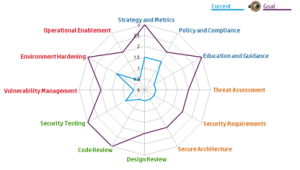Not long ago, I developed a solution for my employer to assess our customers’ application security maturity and evaluate the effectiveness of their current application security initiatives against their business goals.
While this service helps our customers to understand if their investment in AppSec is yielding the return they desire, it also helps us in understanding “What actually works and what doesn’t when it comes to implementing Application Security Programs at an Enterprise Scale”. This in turn enables us to provide the most effective advise to our customers. For me, the knowledge and experience gained from these assessments feed my passion for “Enterprise Application Security” (I hope my blog posts on this topic reflect it).
So, to share some of the knowledge gained from these assessments with you, I am writing this www.canadianpharmacy365.net blog post where I share the Top reason which in “my” opinion is the cause of failure or in-effectiveness of an Application Security Program.
Shiny Box Syndrome
The very first issue faced by the organizations today is “Shiny Box Syndrome”. Information Security is traditionally a product driven field where Information Security teams purchase Firewalls, IPS and IDS devices and implement these to defend the networks or systems from attackers.
The purchase/acquisition of such products raises curiosity in practitioner’s mind and he/she is very enthusiastic about switching it on, watching the blinking lights and then observing it do it’s own thing. This whole process provides him/her a sense of accomplishment but then the curiosity dies and he/she moves on to the next thing. I term this phenomenon of “Acquiring a product, using it to satisfy the curiosity and then moving to the new technology/activity as “Shiny Box Syndrome””. This is perfectly acceptable in this context as once configured Shiny Boxes (Firewalls, IPS, IDS etc.) continue to do their thing even when no one is looking at them (with little periodical health checks and updates etc).
From the assessments we have performed so far, we found that the Shiny Box Syndrome is very much prevalent in Application Security Field as well. The Information Security team will purchase a ‘Static Analysis’ or ‘Dynamic Analysis’ product; perform few ad-hoc scans on random applications to try it and then:
1. Stop using it
2. Implement as a suggested ‘security activity’ within SDLC; conduct the security activity for sometime and then start skipping it (due to not having enough resources) and then ultimately stop using it
3. Tries to offload the ‘COMPLETE’ responsibility to development teams without any guidance and then forget about it.
Dissimilar to Network/System security, Application Security is a different beast. It’s NOT a product driven but a Product Supported stream of information security and requires effective processes around products needing consistent execution by skilled professionals to achieve the desired results.
Not only for security products, this equally applies to manual security assessment practices too such as Threat Modelling. The security team realizes that this is an activity of importance and should be performed within SDLC. A vendor is hired to provide training; few threat models are created and then as the teams get busy in other BAU activities, Threat Modelling initiative never sees the light of day again.
In fact, we also find some SMEs trying to hide the reality of the situation by posing that everything is alright and being done adequately, when it is not. This not only makes the organization loose millions invested in AppSec but also gives the management a false satisfaction that everything that deemed necessary is being done.
So, how do we avoid this?
Achieve Maximum ROI from your Application Security Investment through Effective Governance
To prevent Application Security SMEs from falling into the ‘Shiny Box Syndrome’ trap, the following steps need to be taken:
1. Prior to investing in a technology or security practice, identify the outcomes that you want to achieve from it.
2. In addition to investment in tools, invest in adequate/efficient processes which are customized to your organization’s culture
3. Invest in education of SMEs as well as End Users
4. MOST IMPORTANTLY, create KPIs and Metrics around execution as well as progress and Management MUST ask for an update on monthly basis. More often than not, not having the KPIs is the reason for a security activity not being performed.
I plan to talk about few more reasons that cause Application Security Program failure in my future posts. So, stay tuned!








